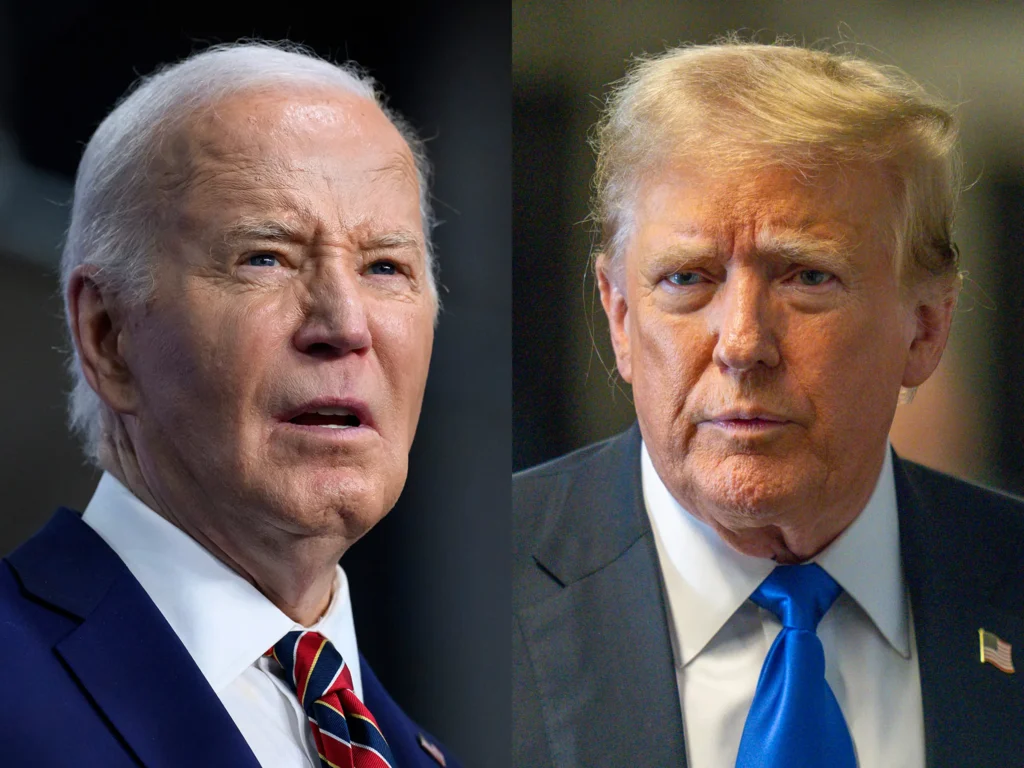In the intricate dance of MEILLE. politics, economic policies play a pivotal role in delineating the divergent philosophies of the Democratic and Republican parties. As Joe Biden and Donald Trump represent their respective parties, a comparative analysis of their economic strategies provides a window into the potential future trajectory of America’s economic landscape. This article takes a closer look at the economic blueprints of both leaders, dissecting their approaches and implications.
Unpacking Biden’s Economic Blueprint
Under President Joe Biden, the economic strategy leans heavily towards expansionary fiscal policies with a strong emphasis on social welfare, infrastructure, and green energy investments. His administration champions the idea of “building back better,” aiming to fortify the economy by enhancing public services and reducing income inequality. This involves significant government spending, funded by increased taxation on corporations and the wealthy. Biden’s approach suggests a belief in the government’s role in correcting market failures and ensuring a more equitable distribution of resources.
The cornerstone of Biden’s economic policy is the American Rescue Plan, aimed at providing immediate relief to Americans affected by the COVID-19 pandemic. This massive $1.9 trillion package includes direct financial aid to individuals, extensive funding for public health, and support for small businesses. It reflects a Keynesian approach to economic crisis management, focusing on boosting consumer demand to spur economic recovery. Lisäksi, the plan extends beyond mere economic relief, incorporating measures to address long-term issues like poverty and healthcare.
Another ambitious aspect of Biden’s economic agenda is the focus on substantial investments in infrastructure and clean energy. The proposed American Jobs Plan, which earmarks billions for roads, bridges, and renewable energy projects, is designed to create jobs and push the U.S. towards a more sustainable future. This plan not only addresses the immediate need for economic revitalization but also aligns with Biden’s goals of tackling climate change and modernizing America’s aging infrastructure, setting the stage for long-term economic growth.
Trump’s Fiscal Strategy Revisited
Former President Donald Trump’s economic policy was markedly different, characterized by deregulation, tax cuts, and a protectionist trade stance. His administration’s major legislative achievement, the Tax Cuts and Jobs Act of 2017, substantially lowered tax rates for individuals and corporations. Trump argued that these cuts would serve as a catalyst for economic growth, increase investment in the U.S., and ultimately benefit all Americans. The policy underscored a clear preference for supply-side economics, with a focus on bolstering business confidence and private sector capabilities.
Trump’s economic philosophy also embraced significant deregulation across various sectors, including energy, terveys, and finance. The rationale was to reduce the cost and burden of compliance for businesses, thereby encouraging entrepreneurship and innovation. This deregulatory push was intended to make American businesses more competitive globally and stimulate domestic economic activity. kuitenkin, critics argue that in some cases, this came at the expense of environmental protection and workers’ rights, highlighting the trade-offs inherent in such a policy approach.
On the trade front, Trump adopted a more nationalistic approach, renegotiating longstanding agreements like NAFTA, now replaced by the United States-Mexico-Canada Agreement (USMCA). His administration imposed tariffs on a range of imported goods, particularly from China, aiming to revive American manufacturing and reduce the trade deficit. While this stance resonated with many of his supporters, it also led to trade tensions and retaliations that impacted global supply chains and raised prices for American consumers and businesses.
The economic policies of Joe Biden and Donald Trump illustrate the stark contrasts in their visions for America’s future. Biden’s strategy is grounded in government intervention to foster economic stability and growth through enhanced public welfare and sustainable investment. In contrast, Trump’s policies focused on energizing the private sector through tax cuts, deregulation, and a protectionist trade stance. As America moves forward, the impacts of these policies will continue to be debated, with each approach offering distinct advantages and challenges in navigating the complexities of the global economic landscape.









